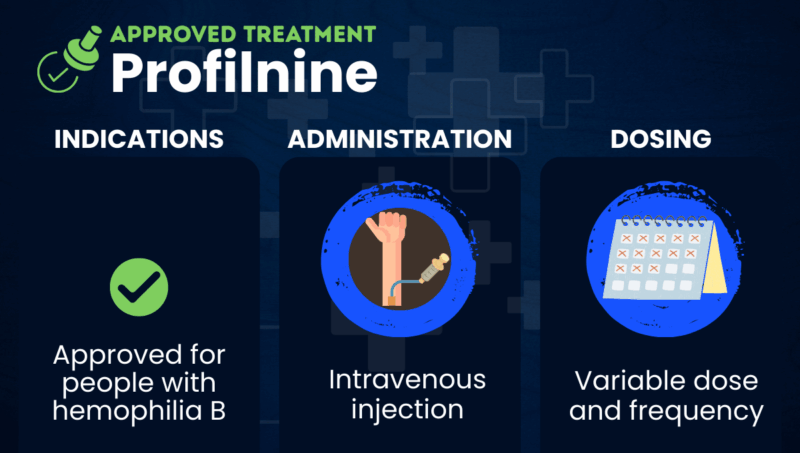Profilnine (factor IX complex) for hemophilia
Last updated Oct. 15, 2025, by Marisa Wexler, MS

What is Profilnine for hemophilia?
Profilnine (factor IX complex) is a plasma-derived factor replacement therapy approved to prevent and control bleeds in people with hemophilia B.
Hemophilia B is caused by a deficiency in a clotting protein called factor IX (FIX). Profiline contains this clotting protein, along with a few others, purified from human plasma, the non-cellular part of blood. By supplying a version of the missing clotting protein, Profiline can help promote normal clotting in people with hemophilia B.
Marketed by Grifols Biologicals, Profilnine is administered via intravenous, or into-the-vein, injections.
Therapy snapshot
| Brand name: | Profilnine |
| Chemical name: | Factor IX complex |
| Usage: | Used to prevent and control bleeds in hemophilia B patients |
| Administration: | Intravenous injection |
Who can take Profilnine?
Profilnine is approved in the U.S. for the prevention and control of bleeding in patients with hemophilia B.
The therapy’s prescribing information does not list any contraindications.
How is Profilnine administered?
Profilnine is given by intravenous injections, which are typically administered by a medical professional. The specific dosage and frequency of treatment are tailored to the individual’s needs, taking into account factors such as weight, bleed severity, and the desired FIX level.
The therapy’s prescribing information also notes that Profilnine shouldn’t be administered at an infusion rate exceeding 10 mL/min because vasomotor reactions, or changes in blood vessel diameter, can occur if the therapy is given too rapidly.

Profilnine in clinical trials
Profilnine and similar therapies containing FIX and other clotting proteins have been commercially available in the U.S. since the late 1960s, predating modern standards for clinical testing. Studies done in the 1950s and ’60s demonstrated that these therapies can increase FIX activity to help reduce bleeding.
A clinical study specifically evaluating the effects of Profilnine in 12 patients with hemophilia B also showed that, following administration of the therapy, FIX had a half-life of 24.8 hours, with a recovery rate of 1.15 U/dL per unit infused per kilogram of body weight. This means that it took approximately a day for the level of FIX to drop by half after Profilnine administration, and that for each unit administered per kilogram of body weight, the blood level of FIX increased by approximately 1.15 U/dL.
Profilnine side effects
The most common side effects of Profilnine include:
- headache
- fever
- chills
- flushing
- nausea and/or vomiting
- tingling
- lethargy
- hives (urticaria)
- allergic reactions.
Other possible side effects associated with the use of Profilnine include:
- allergic reactions, including serious reactions (anaphylaxis)
- dangerous clotting events, which may require monitoring, especially in high-risk patients who are undergoing or have recently undergone surgery, have known liver disease, or have shown signs of abnormal blood clotting
- development of inhibitors or neutralizing antibodies that can reduce the therapy’s efficacy
- transmission of bloodborne infectious agents because the therapy is made from human blood.
Hemophilia News Today is strictly a news and information website about the disease. It does not provide medical advice, diagnosis, or treatment. This content is not intended to be a substitute for professional medical advice, diagnosis, or treatment. Always seek the advice of your physician or other qualified health provider with any questions you may have regarding a medical condition. Never disregard professional medical advice or delay in seeking it because of something you have read on this website.
Recent Posts
